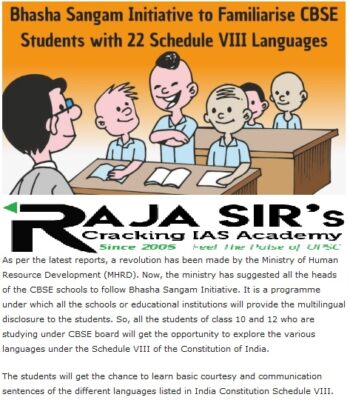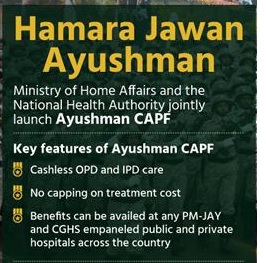- Home
- Prelims
- Mains
- Current Affairs
- Study Materials
- Test Series
03rd Nov 2021
SCO MEMBER STATES ADOPT PROTOCOL TO STRENGTHEN COOPERATION IN PREVENTING HUMAN TRAFFICKING
Shanghai Cooperation Organisation (SCO) adopted a protocol to strengthen cooperation in preventing and combating growing menace of human trafficking, especially women and children.
Highlights:







- The Nineteenth Meeting of Prosecutors General of the Shanghai Cooperation Organization (SCO)Member States was hosted by India.
- The next (20th) meeting will be held in the Republic of Kazakhstan in 2022.
- To strengthen cooperation in preventing and combating growing menace of human trafficking
- To continue exchanging the national legislation to combat the menace of human trafficking
- To provide protection and assistance in victims of trafficking within their competence.
- To develop cooperation between the educational (training) organizations (institutions) of the SCO member states in the field of training and advanced training of prosecutors, whose competence include combating trafficking.
- To conduct bilateral and multilateral activities on combating the threat of human trafficking.
- The Constitution of India, under Article 23 (1), prohibits trafficking in human beings or persons.
- The Immoral Traffic (Prevention) Act, 1956 (ITPA) is the premier legislation for prevention of trafficking for commercial sexual exploitation.
- Criminal Law (amendment) Act 2013 provide for comprehensive measures to counter the menace of human trafficking including trafficking of children for exploitation in any form including physical exploitation or any form of sexual exploitation, slavery, servitude, or the forced removal of organs.
- Protection of Children from Sexual offences (POCSO) Act, 2012, which has come into effect from 14th November, 2012 is a special law to protect children from sexual abuse and exploitation.
- It provides precise definitions for different forms of sexual abuse, including penetrative and non-penetrative sexual assault, sexual harassment.
- There are other specific legislations enacted relating to trafficking in women and children
- Prohibition of Child Marriage Act, 2006
- Bonded Labour System (Abolition) Act, 1976
- Child Labour (Prohibition and Regulation) Act, 1986
- Transplantation of Human Organs Act, 1994
- Sections 372 and 373 of IPC deal with selling and buying of girls for the purpose of prostitution.
- State Governments have also enacted specific legislations to deal with the issue. (e.g., The Punjab Prevention of Human Smuggling Act, 2012).
- Anti-Trafficking Cell (ATC):
- Anti-Trafficking Nodal Cell was set up in the Ministry of Home Affairs (MHA)in 2006 to act as a focal point for communicating various decisions and follow up on action taken by the State Governments to combat the crime of Human Trafficking.
- India has ratified the United Nations Convention on Transnational Organized Crime (UNCTOC).
- India has ratified the South Asian Association for Regional Cooperation (SAARC) Convention on Preventing and Combating Trafficking in Women and Children for Prostitution.
- A Memorandum of Understanding (MoU) between India and Bangladesh on Bi-lateral Cooperation for Prevention of Human Trafficking in Women and Children, Rescue, Recovery, Repatriation and Re-integration of Victims of Trafficking was signed in June, 2015.
- SCO is an intergovernmental Eurasian political, economic, and security alliance.
- It is the world's largest regional organisation in geographic scope and population.
- The SCO is the successor to the Shanghai Five, a mutual security agreement formed in 1996 between China, Kazakhstan, Kyrgyzstan, Russia, and Tajikistan.
- The SCO is governed by the Heads of State Council (HSC), its supreme decision-making body, which meets once a year.
- The headquarters is located in Beijing, China.
- The main objectives of SCO are to:
- Strengthen relations among member states.
- Promote cooperation in political affairs, economics and trade, scientific-technical, cultural, and educational spheres as well as in energy, transportation, tourism, and environmental protection.
- Safeguard regional peace, security, and stability.
- Create a democratic, equitable international political and economic order.
- The country’s start-up companies should be encouraged to lead the charge for creating new linkages within SCO region.
- As a leader in the field of traditional medicines, India should collaborate with interested SCO parties.
- India should encourage cooperation in the micro, small and medium enterprises sector in agriculture, energy, education, pharmaceuticals and information communication technology.
- Given the salience of Buddhist connections in SCO countries, priority should be accorded to tourism.
- A granular dialogue on a trade and investment promotion programme is essential through sectoral working groups of the SCO business council.

- Born: 30 October 1908, Ramanathapuram
- He was a politician and a patriarch of Thevar community in the state of Tamil Nadu, India.
- He is seen as a deity among the Mukulathor community, which is a cluster community comprising the Kallar, Maravar and Ahambadiar.
- Thevar was not against the Hindu religion. He had an idea to strengthen the Hindu religion based on spirituality.
- However, he did not accept the traditional Hinduism because that supported ‘Varnashrama.
- Thevar mobilised resistance to it, touring villages in the affected areas and leading protest rallies for the rights of the individuals registered under it.
- He is one of the founding members of the All India Forward Bloc (AIFB).
- He was elected three times to the national Parliamentary Constituency of AIFB.
- Died: 30 October 1963, Tirumangalam
- He belonged to those Netaji followers which refused to believe that its leader died in an air crash in Taihoku in August 1945.
- During his career, he supported Subhas Chandra Bose for getting elected as President of the Indian National Congress in 1939. He mobilized all south India votes for Bose.
- He ran a magazine, called ‘Netaji’.
- Thevar protested Criminal Tribes Act (CTA) by mobilising the people and launching protests. He was instrumental in getting the act repealed after continuous efforts in 1946.
- Criminal Tribes Act (CTA) was enacted by the British in 1920, against the Mukulathor
- He supported the “Temple Entry Movement” which removed restrictions prohibiting Dalits from entering Hindu temples. Thevar supported this reform and in 1939, he helped the activist A. Vaidyanatha Iyer take Dalits to Meenakshi Temple in Madurai.

- It is traditional method of making wooden toys using non-toxic paints and natural dyes.
- Toys are made in Etikoppaka village on the banks of Varaha River in Vishakhapatnam district of Andhra Pradesh.
- Etikoppaka Toys have obtained their Geographical Indication (GI) tag in Andhra Pradesh.
- Features:
- The toys are made with lacquer colour.
- The toys are also called as lacquer toys because of application of lacquer coating.
- They are traditionally known as Etikoppaka toys or Etikoppaka Bommalu.
- The toys are made out of wood and are coloured with natural dyes derived from seeds, lacquer, bark, roots and leaves.
- The art of toy making is also known as Turned wood Lacquer craft.
- Methodology:
- A colourless resinous secretion of numerous insects is used.
- The already prepared vegetable dyes are further mixed to the lac, during the process of oxidation.
- After this process, the end product obtained is rich and coloured lacquer.
- The Project 15B ships are a follow-on of the Kolkata-class destroyers (Project 15A).
- They are also known as the Visakhapatnam-class destroyers.
- The ships are designed by the ‘Directorate of Naval Design’.
- Project 15B features overall indigenous content of nearly 75%.
- It is built with DMR-249A grade steel developed by the Defence Metallurgical Research Laboratory (DMRL) under the Defence Research and Development Organisation (DRDO).
- Under this project, the Indian Navy will receive a total of four of the Visakhapatnam class of destroyers, the deal for which was signed in January 2011.
- The 4 warships have been named after major Indian cities, namely Visakhapatnam, Imphal, Surat and Mormugao.
- With a full load displacement of 7,400t, each 15B ship features advanced technology and is designed to cruise at a maximum speed of 30k.
- They are equipped with indigenous weapons, including BEL’s medium-range surface-to-air missiles, BrahMos surface-to-surface missiles, and indigenous torpedo tube launchers and anti-submarine indigenous rocket launchers.

- It is an initiative of the Ministry of Education under Ek Bharat Shreshtha Bharat.
- Aim:
- To teach basic sentences of everyday usage in 22 Indian languages.
- To make people skilled in conversations in an Indian language other than their mother tongue.
- Developed by NCERT.
- Learners in school will be able to get acquainted with all the languages-their scripts and pronunciation.
- Available on DIKSHA, ePathshala and 22 booklets.
- Initiative of Department of Higher Education, in collaboration with MyGov.
- Developed by a startup Multibhashi, selected by myGov through a competition.
- The ship was formally named as ‘Tushil’, meaning Protector Shield.
- The Talwar-class frigates or Project 11356 are a class of stealth guided missile frigates designed and built by Russia for the Indian Navy.
- Based on an Inter-Governmental Agreement(IGA) between India and Russia, the two ships of Project 1135.6 will be manufactured in Russia and two in India at M/s Goa Shipyard Limited (GSL).
- The construction of these ships is based on Indian Navy’s requirements to meet the spectrum of naval warfare in all three dimensions of Air, Surface, and Sub-surface.
- Indian, Russian Weapons and Sensors are equipped to operate in Littoral and Blue waters, both as a single unit and as consort in a naval task force.
- They feature “stealth technology” in terms of low radar and under water noise signatures.
- These ships are equipped with Indian supplied equipment like
- Surface to Surface Missiles, Sonar system, Surface Surveillance Radar.
- Communication Suitealong with Russian Surface to Air Missiles and gun mounts.
- To enhance the management and governance capabilities of the state and its health facilities.
- To expand the design and coverage of the state’s health insurance program;
- To improve the quality of health services through certification and better human resource systems;
- To enable efficient access to medicines and diagnostics.
- The project will help strengthen the effectiveness of Meghalaya’s health insurance program known as the Megha Health Insurance Scheme (MHIS).
- It currently covers 56% of the households.
- MHIS plans to offer a more comprehensive packageand cover 100% of the households.
- It will reduce barriers to accessing hospital servicesand preventing catastrophic out-of-pocket costs for poor families.
- It will enable women to better utilize healthcare services at the community level.
- It will aid Meghalaya to check on the quality of health services.
- The project will adopt performance-based financing system.
- It will increase the accountability of the health subsidiaries of the state and central government.
- The project will move towards a performance-based financing system where Internal Performance Agreements (IPAs) between the DoHFW and its subsidiaries would foster more accountability at all levels.
- The project will also focus on promoting synergy between various schemes and augment the capacity of the state insurance agency.
- The project will invest in infection prevention and in improving the overall ecosystem for bio-medical waste management.

- Aim: To provide cashless and paperless medical treatment at empanelled hospitals.
- It will provide cashless healthcare services to serving CAPF personnel and their dependents through Ayushman Bharat PM-JAY IT platform.
- The scheme will benefit 35 lakh CAPF personnel.
- It is committed to ensure healthcare facilities of CAPF personnel & their families.
- The scheme will switch from the paper-based manual process of availing healthcare benefits to a paperless service.
- It refers to uniform nomenclature of five Central Armed Police Forces of the Union of India under the authority of the Ministry of Home Affairs.
- Aim: To defend the national interest mainly against the internal threats.
- Classification: Border Security Force (BSF), Central Reserve Police Force (CRPF), Central Industrial Security Force (CISF), Indo-Tibetan Border Police (ITBP) and the Sashastra Seema Bal (SSB).

- Capital, asset quality and leverage will be the key areas for monitoring in the revised framework.
- The revised PCA framework will be effective from January 1, 2022.
- Prompt Corrective Action Framework refers RBI’s watchlist of weak banks. RBI imposes restrictions like curbs on lending on such banks.
- The PCA Framework applies only to commercial banks and does not cover cooperative banks and non-banking financial companies.
- To enable supervisory intervention at an appropriate time and require the supervised entity to initiate and implement remedial measures in a timely manner, so as to restore its financial health.
- The RBI’s PCA Framework was introduced in December 2002 as a structured early intervention mechanism.
- The revised PCA Framework was issued by the RBI in 2017.
- Under the Prompt Corrective Action Framework there are two types of restrictions
- Mandatory: This category includes the restrictions on dividend branch, extensions and director’s compensations.
- Discretionary: This includes restrictions on lending and deposit.
- A bank will be placed under PCA framework based on the audited Annual Financial Results and the Supervisory Assessment made by RBI.
- However, RBI may impose PCA on any bank during the course of a year in case the circumstances so warrant.
- The parameters that invite corrective action from the central bank are:
- Capital to Risk weighted Asset Ratio (CRAR)
- Net Non-Performing Assets (NPA) and
- Return on Assets (RoA)
- Leverage ratio
- When a bank is brought into the PCA framework, it should face restrictions on distributing dividends, remitting profits and even on accepting certain kinds of deposits.
- Besides, there are restrictions on the expansion of branch network, and the lenders need to maintain higher provisions, along with caps on management compensation and directors’ fees.
- Some of the structured and discretionary actions that could be taken by the Reserve Bank are:
- Recapitalization
- Restrictions on borrowing from inter-bank market to steps to merge/amalgamate/liquidate the bank
- Impose moratorium on the bank if its CRAR does not improve beyond etc.









 Latest News
Latest News
 General Studies
General Studies